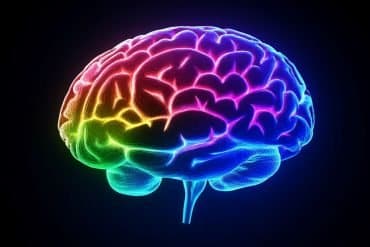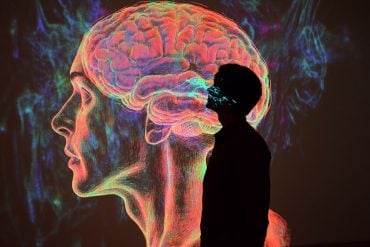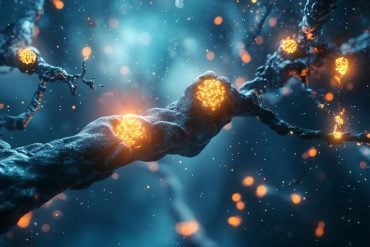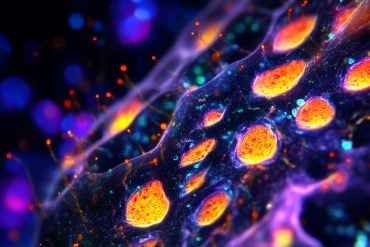Summary: Based on new findings, researchers say bone marrow transplants may be an effective treatment for ALS.
Source: UC Irvine
Along with the central nervous system, the immune system may play a fundamental role in Amyotrophic Lateral Sclerosis (ALS), suggesting that bone marrow transplants may be an effective novel treatment for the neurodegenerative disease, according to findings from a research team that included Albert LaSpada, MD, PhD, distinguished professor of pathology, neurology and biological chemistry at the University of California, Irvine School of Medicine.
The study, “Clonally expanded CD8 T cells characterize amyotrophic lateral sclerosis-4,” recently published in Nature, was a joint collaboration between LaSpada and Mount Sinai microbiology faculty members Laura Campisi, PhD, and Ivan Marazzi, PhD.
The team found both immune and nervous system dysfunctions in animal models and patients with ALS4, a juvenile and slowly progressive form of the condition caused by mutations in the senataxin protein coding gene.
“This is the first study to implicate altered cell-mediated immune system function in ALS and raises the prospect of abnormal cell mediated immunity as a contributing factor in not only ALS4, but also in other forms of the disease, including sporadic ALS, which accounts for 90 percent of all cases,” said LaSpada, a corresponding author on the study.
ALS is characterized by the progressive death of motor neurons, which severely impairs the patients’ ability to move their arms and legs, speak, swallow and eventually, breathe. There is no treatment or cure, and previous research has focused on neurons.
More recent studies, however, have shown evidence of interaction between the central nervous and immune systems.
The team’s most important discovery was that cell-mediated immunity, which does not involve antibodies, is altered in ALS4, based on the presence of expanded CD8 T-cells. These cells contribute to motor neuron degeneration in ALS4, validated by further research showing that replacement of bone marrow in ALS4 mice with normal control mice bone marrow was an effective treatment.

“The therapeutic benefit conferred by bone marrow transplantation in ALS4 mice can now be considered as a treatment for human patients. Furthermore, although ALS4 is a rare familial inherited form of ALS, it shares the same cardinal histopathological findings observed in sporadic ALS and most other familial forms.
“Hence, if future research implicates an aberrant CD8 T-cell response in sporadic ALS, then bone marrow transplantation could be a novel treatment approach for many ALS patients in the future,” LaSpada said.
Considering the potential therapeutic opportunities suggested by this work, LaSpada recommends the next steps should be to re-evaluate cell-mediated immunity in sporadic ALS patients to determine if altered T-cell function is a feature of their disease process.
Funding: This work was supported by the National Institutes of Health; Burroughs Wellcome Fund; and the Chan Zuckerberg Initiative Neurodegeneration Challenge Network.
About this ALS research news
Author: Anne Warde
Source: UC Irvine
Contact: Anne Warde – UC Irvine
Image: The image is in the public domain
Original Research: Closed access.
“Clonally expanded CD8 T cells characterize amyotrophic lateral sclerosis-4” by Albert LaSpada et al. Nature
Abstract
Clonally expanded CD8 T cells characterize amyotrophic lateral sclerosis-4
Amyotrophic lateral sclerosis (ALS) is a heterogenous neurodegenerative disorder that affects motor neurons and voluntary muscle control. ALS heterogeneity includes the age of manifestation, the rate of progression and the anatomical sites of symptom onset. Disease-causing mutations in specific genes have been identified and define different subtypes of ALS.
Although several ALS-associated genes have been shown to affect immune functions, whether specific immune features account for ALS heterogeneity is poorly understood. Amyotrophic lateral sclerosis-4 (ALS4) is characterized by juvenile onset and slow progression.
Patients with ALS4 show motor difficulties by the time that they are in their thirties, and most of them require devices to assist with walking by their fifties. ALS4 is caused by mutations in the senataxin gene (SETX). Here, using Setx knock-in mice that carry the ALS4-causative L389S mutation, we describe an immunological signature that consists of clonally expanded, terminally differentiated effector memory (TEMRA) CD8 T cells in the central nervous system and the blood of knock-in mice. Increased frequencies of antigen-specific CD8 T cells in knock-in mice mirror the progression of motor neuron disease and correlate with anti-glioma immunity.
Furthermore, bone marrow transplantation experiments indicate that the immune system has a key role in ALS4 neurodegeneration. In patients with ALS4, clonally expanded TEMRA CD8 T cells circulate in the peripheral blood.
Our results provide evidence of an antigen-specific CD8 T cell response in ALS4, which could be used to unravel disease mechanisms and as a potential biomarker of disease state.






